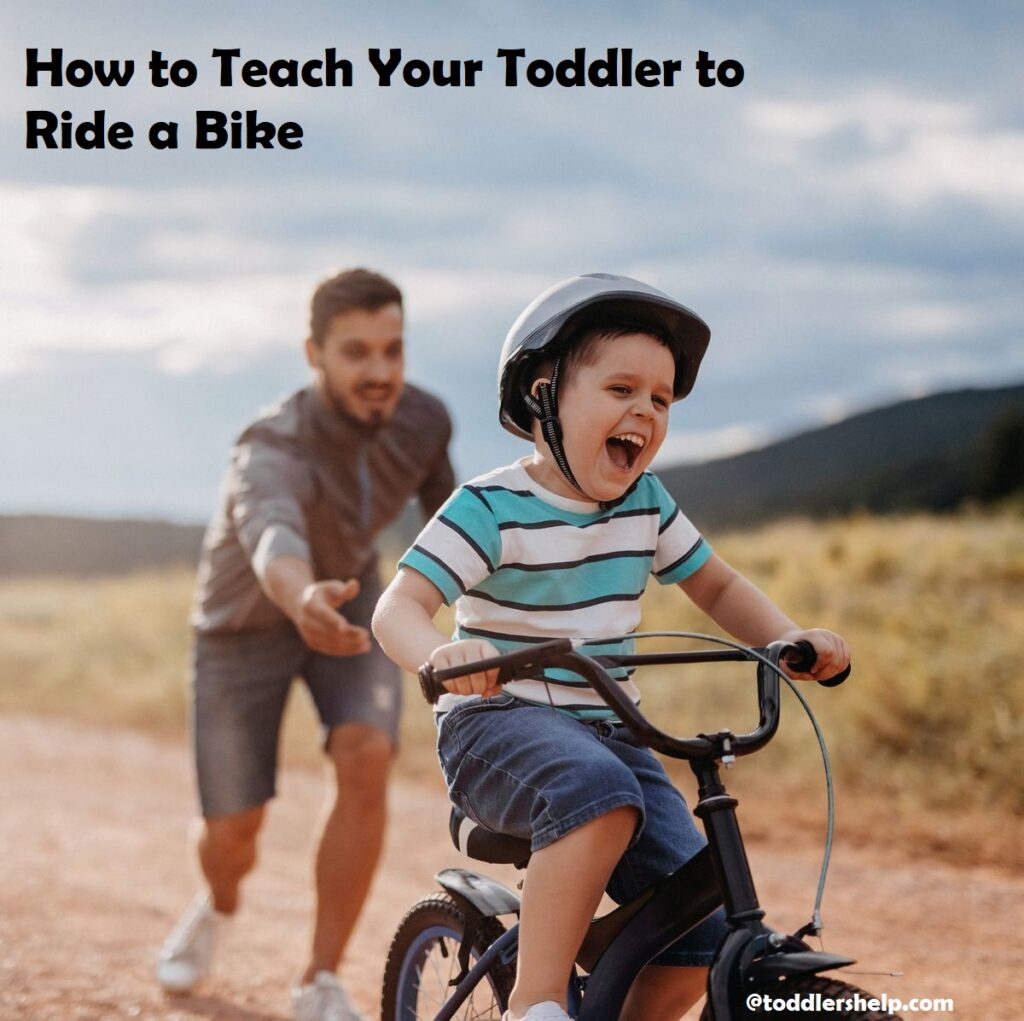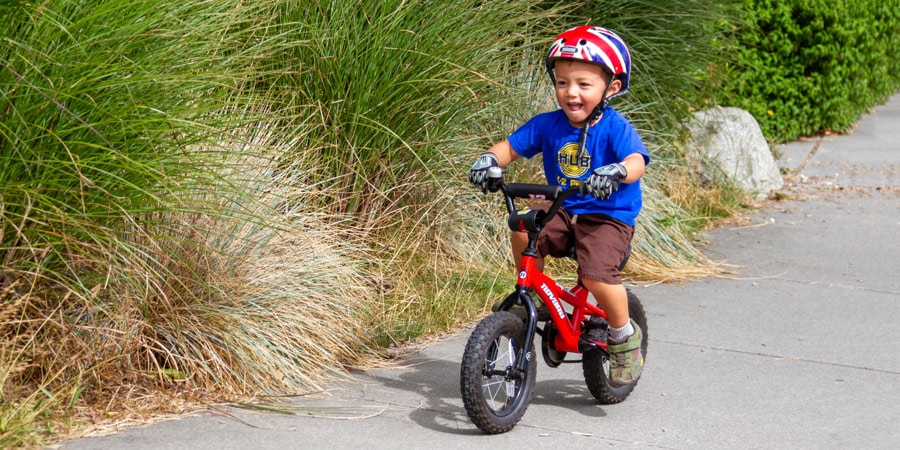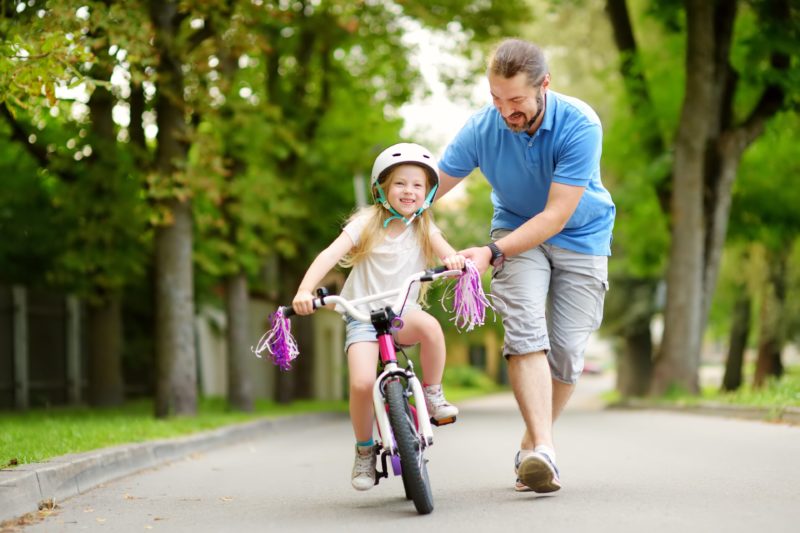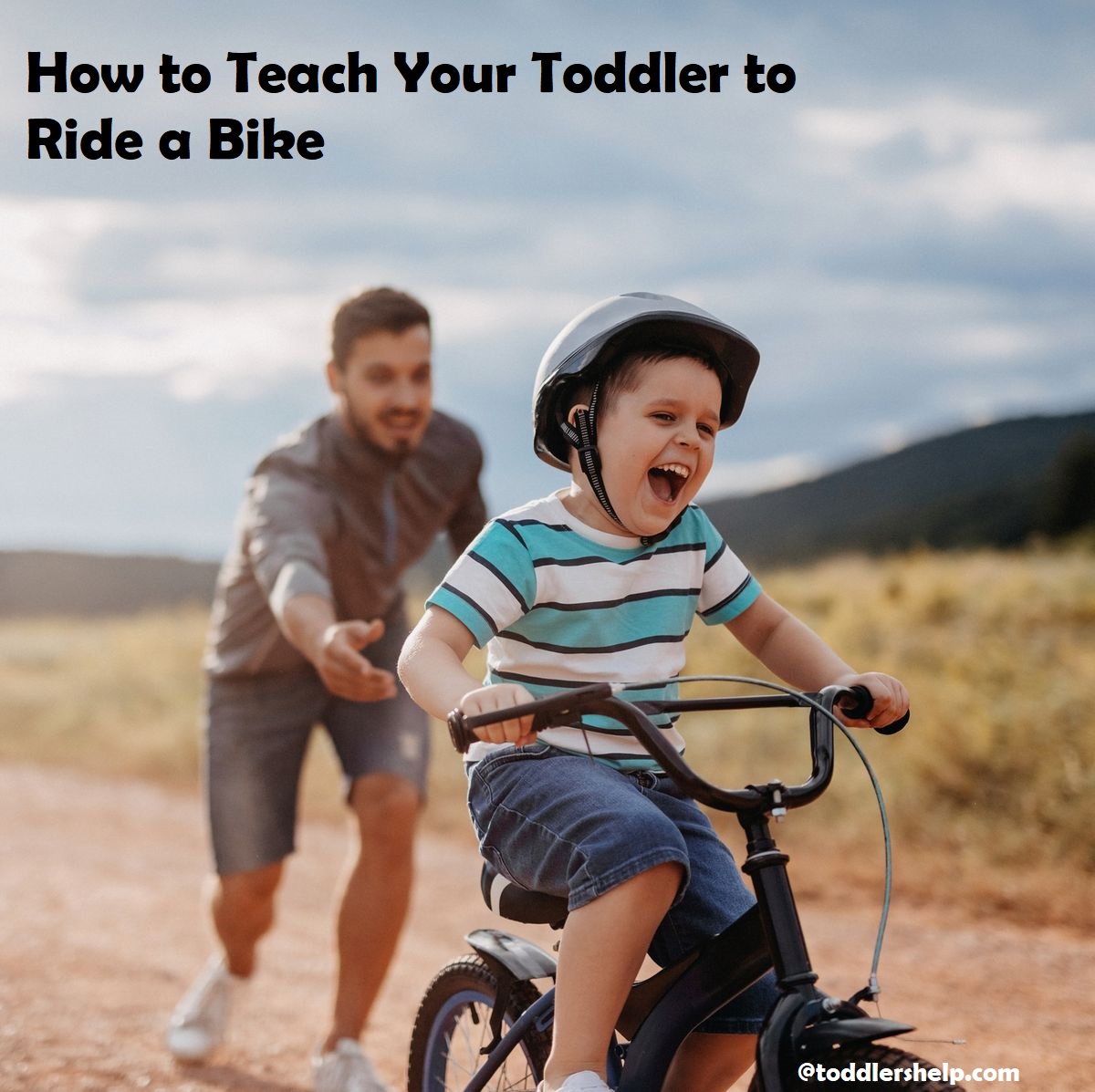Is your little one all set for their first biking experience? Do you want to know how to teach your toddler to ride a bike? You’re in the right place!
In this article, we will be teaching you tips and tricks on how to get your little one on the road with confidence. With our complete guide, you can ensure that your toddler not only learns safely but also enjoys their biking journey.
- Introduction: Teaching your toddler to ride a bike is an important step in their development, and something most toddlers will enjoy doing. To ensure your toddler has a good experience, it’s important to start off correctly by making sure you have the right materials for the job, such as a properly sized helmet and bike. It is also important to make sure the area you are teaching in is safe, free of hazards, and with plenty of space.
To help make this process easier we have created a guide on how to safely teach your toddler how to ride a bike. We’ll cover the necessary safety tips, the right age for teaching kids how to ride a bike and different methods for teaching them riding skills such as steering and balance. By following this guide you can ensure that your toddler learns properly from the start and can fully enjoy learning how to ride!
Importance of learning to ride a bike
Learning to ride a bike at an early age can have numerous benefits for your child. Biking allows toddlers to develop important cognitive and gross motor skills, while also helping them stay physically active and fit. But teaching a child to ride a bike can be a challenging task, which is why it’s important to get it right the first time.
In this guide, we will discuss the importance of learning to ride a bike and explore some tips that can make the process easier for both you and your toddler. We will also highlight some important points about selecting the right bike, choosing safety gear and proper instruction for children of all ages. With this in-depth guide, you should be able to provide your toddler with an enjoyable experience as they embark on their two-wheeled learning journey!
Benefits of learning at an early age
Teaching your toddler to ride a bike offers many benefits that last far beyond the first ride. The developing years of a child are critical for physical, mental and emotional growth, so introducing your little one to cycling can have an impact on their development in many positive ways.
Physically, learning how to ride a bike helps toddlers build motor skills and coordination. Cycling requires them to use several muscle groups at once, including their core muscles, arms and legs. Most significantly, riding a bike helps improve balance, proprioception—the awareness of one’s body in space—and perception – the ability to process sensory information from the environment. It’s also an excellent way for them to get some exercise and increase their overall physical health and fitness level.
Emotionally, riding a first bike serves as an introduction into independence for toddlers. They learn how to control their movements and how hard or gentle they need to apply force on certain components such as the brakes or pedals. This brings forth feelings of confidence, pride and joy as they master something all by themselves – something that was previously ‘too difficult’ just moments before.
Overview of steps to teach a toddler to ride a bike
Once you have determined that your toddler is ready to learn how to ride a bike, there are several general steps parents must take in order to help the process go smoothly.
First, it’s important to have the right size bike for your toddler—the right size will provide them with the proper stability and comfort while they learn. If your child is too small for their current bike, make sure you purchase one that fits properly. Additionally, make sure all of the parts of the bike are working properly and that everything is tightened before they begin to ride.
Second, address any safety concerns from the start. Make sure your child wears a helmet and padded clothing every time they ride their bike. Make sure both their feet can reach the ground easily when sitting on the seat and that there are no sharp edges or protruding bolts on the frame of their bike that might cause injury during a fall or collision.
Third, practice! Start by pushing them around in circles and encourage them as much as possible if they get nervous or scared. Work on balance first until your child feels comfortable keeping steady for short amounts of time; this is when you can start teaching them how to use pedals by having them “pedal” while being held up by an adult or set of training wheels or roller wheels on each side.
Once they understand how gears work and can coordinate pedaling effectively with steering, it’s time for a successful test ride without assistance! Have patience as not all children will progress at the same speed; however, regular practice can help ensure mastery much faster—so encourage as much fun-filled riding as possible!
Preparing for the First Ride
Once you have purchased a bike with the right measurements, there are some additional steps to ensure that your toddler is ready for his first ride. Getting the bike and yourself ready will help create a safe and successful ride.
Purchase protective gear: To ensure the safety of the rider, it’s important to purchase protective gear even on their first ride. Look for properly fitted helmets, elbow and knee pads, gloves, and any other additional padding that will provide added protection in case of an accident.
Make sure clothing is appropriate: Clothing should be loose enough to allow for comfortable movement when pedaling but not so loose as to get caught in any of the moving parts of the bike. In order to get an accurate representation of what size your child wear a helmet while trying out clothes sizes. Additionally, closed toe shoes should be worn with rubber soles to provide grip while riding.
Check tires: Properly inflated tires are essential for providing a smooth ride; too little air can lead to discomfort while riding or risks a flat tire at worst. Too much air runs the risk of blowing out unexpectedly.
Check brakes: Make sure that all brakes are functioning properly before allowing your child to take off on the bike for their first time.
Adjusting handlebar height and seat angle: Making sure that these components are properly adjusted allows your child maximum control over their bike and will help them stay safe even during more difficult last-minute adjustments or maneuvers down hills or around curves.
Choosing the right bike
When you’re choosing the right bike for your toddler, it’s important to keep the following things in mind:
- Size: The bike should fit your child properly. It should not be too large or too small. Smaller bikes are typically better for younger toddlers because they provide better stability and more control for the rider. To determine if a bike is an appropriate size, measure your child from their crotch to the ground. The height of the bicycle’s seat should match this measurement and be adjustable in size so that you can accommodate any growth spurts.
- Weight: Bike weight is important since riding a heavy bike can become tiring quickly. A good rule of thumb is to select a bike that weighs no more than 40-50 percent of the child’s body weight.
- Wheels and tires: Bigger wheels and tires will provide greater stability than smaller ones, which makes them perfect for young riders. They also ensure smoother rides with more traction on various surfaces like grass, asphalt, or dirt roads. Additionally, make sure that you look at overall dimensions to make sure that it fits your criteria based on where it will be most ridden (i.e., in an open area or on a sidewalk).
- Brakes and pedal settings: Safety is paramount when choosing any bicycle but especially when selecting one for children as they may not yet possess all of the skills necessary to safely operate a bicycle along with other vehicles around them on public roads or paths without proper supervision or guidance from you as an adult rider or supervisor of safety practices in children’s cycling activities outdoors. Make sure that there is at least one hand brake available – preferably two – so that they can easily slow down or stop when needed while learning how their brakes work (front wheel brake vs rear wheel brakes). In addition, if possible choose one with adjustable pedal positions as these will help prevent fatigue during extended rides as well as allow younger riders to participate within their comfort zone by starting off with lower resistance levels until its time for them to bring out more energy into their ride itself at higher speeds outdoors around public areas such as parks & nature preserves etc.
Adjusting the bike to fit the toddler
The most important part of teaching a toddler to ride a bike is fitting the bike correctly to them. This will ensure they are comfortable while they learn, and that they feel in control throughout the process.
The seat and handlebars should be adjustable so that your child can reach them without stretching, sitting on tiptoes or having their knees too far away from their body. Some bikes come with extension kits which allow you to adjust the height of the seat and handlebars more easily; this is recommended if your child’s bike needs to be adjusted frequently as they grow. If you don’t have an extension kit, make sure to store an Allen key at home or in your car for easy access when needed.
It can also be helpful to adjust the brakes so that it is easy for your toddler to reach and activate them quickly, as well as fit toe straps over their shoes if necessary (we suggest keeping some at hand for this purpose!) Once you have adjusted the bike correctly for their size and comfort level, you are good to go!
Teaching Your Toddler to Balance
Before your toddler can pedal without assistance, he/she must learn how to balance on the bicycle. Balance is the most important skill for successful and safe bike riding, and should be practiced as much as possible. Start by allowing your toddler to practice balancing on the bike in a flat area with no obstacles or traffic. You’ll want to remove any training wheels from the bicycle if those were previously installed on it; it may take some time for your toddler to get used to not having those extra support systems in place, but this step will make a big difference in his/her ability to learn how to balance properly.
Once your toddler has undertaken some practice balancing runs with no pedals attached, it is time Progress to slow and easy pedal strokes with supervision. The focus should be solely on learning how to balance without leaning too far back or forward. With each small success try adding an extra stroke of the pedals until your toddler is able to make full circle revolutions while maintaining balance – this may take several attempts! Make sure you let your child know when they complete a successful cycle in order to encourage them, but do not push too hard if they are becoming frustrated – you want biking practice sessions with your toddler To be enjoyable experiences and set them up for lifelong success!
Upon mastering the art of riding a bicycle unaided encourage him or her in fun activities such as taking short trips around local parks or recreation areas – but always be sure that he/she wears protective gear such as helmets and elbow pads so that these initial rides are as safe as possible for your enthusiastic cyclist!
Using a balance bike
A balance bike is a great way to get your toddler ready to ride a two-wheeler. Balance bikes are specifically designed for children learning to ride a bike, and they can be easily adjusted as your child grows. They have no pedals or brakes, but by using their feet on the ground, your toddler can build confidence and get used to balancing on two wheels.
To get started, measure your child’s inseam and adjust the seat of the balance bike for their height. You should be able to fit two fingers between their thigh and the seat when it is correctly adjusted. Make sure that your child can stand over the bike without straining too much. The handlebar stem should also be adjustable so you can ensure it is at an appropriate height for your toddler’s arms to reach comfortably.
Once you have set up the balance bike correctly, it is time to start riding! First, teach them how to scoot forward while walking alongside them with one hand on their shoulder as guidance. As they become comfortable with this motion, encourage them to practice frequently and gradually increase the speed at which they scoot. Allow them breaks when they need them and always keep safety in mind – make sure they are wearing a helmet! Remind them that if they feel like they’re going too fast or losing their balance, all they need to do is put their feet down on either side of the bike quickly until they regain control again – this will give them added confidence as well! With enough practice, before you know it, your young bicyclist will be ready for a real bike!
Teaching balance through gliding
Once your child feels comfortable on the tricycle, they’re ready to start learning balance on two wheels. Teaching your toddler to balance is key, as this allows the rider to go forward without needing to pedal. Balance bikes are a great tool for teaching children how to stay upright on two wheels, and can give your toddler a good foundation for learning how to ride a bike.
Before you start balancing activities with your toddler, make sure that you have appropriately adjusted their bike according to their size. For younger children (up to 4 years old), start out with pedals removed from the bike and let them practice just gliding along with their feet off the ground. You can hold onto them or run alongside them as they get used to the sensation of gliding around on two wheels. After establishing balance through gliding activities for some time, gradually lower the seat so that at some point your toddler is able to reach the ground while straddling their bike with both feet flat on either side. This positioning should build confidence and help them begin pedaling activities towards mastering two-wheel riding.
Steering and Braking
Once your child has the balance part of riding bike down, you can start teaching them how to steer and brake safely. Before going outside, practice steering in a hallway or indoor area — bonus points if you use an obstacle course! Show your child how to slightly turn the handlebars in the direction of their turn and also show them that turning it too sharply can make them go off balance or even fall over.
When it comes to braking, practice with your toddler on a soft surface like grass before introducing pavement. Have them sit on the bike and apply gentle pressure to the brakes with their feet so they can get used to how it feels. After that, have your child move around on their bikes while lightly stepping on the brake with one foot at different intervals – combined with steering turns – so they get comfortable doing both at once. This will help keep them safe when riding around your neighborhood where they may need both skills quickly upon encountering obstacles along their path.
Teaching steering
Teaching your toddler to ride a bike is a great way to foster independence and build self-confidence. But before taking your little one out on the open road, it’s important to ensure they understand how to properly operate the vehicle they’re riding. Here we will focus on the important basics of teaching your toddler how to steer the bike in a safe and efficient manner.
Every bike is unique when it comes to riding and turning, but there are some basic principles that can apply across different models. Generally speaking, cyclists should modulate their bodyweight so that their body moves with the motion of the bicycle when going left or right. This helps to keep riders balanced and their line straight, allowing for smoother and more efficient bikes handling.
The key for toddlers learning how to steer lies heavily in practice and repetition. Start out by having them practice in an area free from distractions such as moving traffic or objects that may require evasive action from them. Begin by having your child break away from you and guide them through various turns while they keep their eyes fixed ahead of them and no longer have you in sight — this will help instill confidence in themselves as an independent rider which will come with time and experience later on down the line when dealing with obstacles or external factors while cycling. When making turns, give verbal cues such as “turn right” or “lean left” that will help guide them through maneuvering their bicycle safely without prompting unnecessary physical contact between yourself and child while they practice steering independently without assistance or supervision from an adult.
Teaching braking
Teaching your toddler to properly brake is essential for their safety when riding a bike. You may want to start with the fundamentals of balancing and slowly integrate braking into the lesson plan. Proper braking is achieved with the application of both brakes, one on each wheel, at the same time. This reinforces the benefits of balance, as braking with one wheel will cause a wobble. Make sure your child comfortably places their hands on the brake handles and also explain to them that they must pull up firmly when using them.
Before leaving flat ground, demonstrate how to use the brakes by having your child hold onto you while seated on the bike and then applying both brakes gently at once. Ensure your child’s feet are firmly planted on either side of the bike before showing them how to brake by themselves. Once comfortable with this technique, you can move onto an inclined area like a hill or footbridge where they can practice slowing down while coasting downhill while applying light but firm pressure to both wheels through both break levers with their hands simultaneously.
Combining steering, braking, and pedaling
Now that your toddler has become comfortable with the basics, it’s time to bring all the skills together. Before allowing them to take-off on their own, help them practice combining each skill. Have your child pedal while you maintain control of speed, braking, and steering as you walk alongside them. You can also introduce a scooter and gradually give them more and more control while still maintaining support when they need it. Repeating this goes a long way in teaching children how to combine their skillset for safety and better balance.
Once your toddler seems confident in pedaling, braking, and steering simultaneously, encourage them to take off on their own under your supervision. Praise all improvement – even small successes – and remind yourself that mastering bike riding takes practice! As long as you are patient and understanding with your child throughout the process, they will eventually develop confidence in this skill.
Conclusion
Making sure your toddler is prepared and confident before they start riding their first bike is essential. With the right amount of patience and practice, your child will find that learning how to ride a bike can be fun, rewarding, and something they will always remember.
Ultimately, teaching your toddler to ride a bike may be stressful at times but it pays off when you see that smile spread across their face once they master it. By focusing on the basics, encouraging self-confidence, remaining patient, providing safety precautions, and reinforcing positive reinforcement during the process; you’ll see your kiddo on wheels before you know it!
FAQ’S
What age should you teach a child to ride a bike?
Most children are ready to learn how to ride a bike between the ages of 3 and 6 years old.
Should a 2 year old be able to ride a bike?
It is not common for a 2 year old to be able to ride a bike, as they are typically not physically or developmentally ready for this skill.
Should a 3 year old be able to ride a bike?
It is possible for a 3 year old to learn how to ride a bike with training wheels or a balance bike, but it depends on the child’s physical abilities and development.
How do toddlers learn to ride a bike?
Toddlers can learn to ride a bike through the use of balance bikes, which teach them to balance on two wheels before adding pedals.
How do I teach my 2.5 year old to ride a bike?
To teach a 2.5 year old to ride a bike, consider using a balance bike and allowing them to practice balancing and steering.
How do I teach my 2 year old to balance a bike?
A 2 year old may not be ready to balance a bike yet, but if you choose to use a balance bike, let them practice walking while seated on the bike and getting comfortable with the feel of it.
Can a 2.5 year old ride a bike?
It is possible for a 2.5 year old to ride a bike with a balance bike or training wheels, but it depends on the child’s individual development and physical abilities.
Why can’t my 4 year old ride a bike?
There could be a variety of reasons why a 4 year old is having difficulty riding a bike, such as a lack of practice, fear or anxiety, or physical limitations.
Can a 3 year old ride a bike without training wheels?
It is possible for a 3 year old to ride a bike without training wheels if they have had ample experience on a balance bike and have developed good balance and coordination.
What is the earliest age for a bike?
The earliest age for a bike typically depends on the child’s physical development and coordination, but many children start riding balance bikes as early as 18 months old.
See Also-
- Best toddler tool set
- Best toddler toothpaste
- Best toddler table and chairs
- Best toddler climbing toys
- Best toddler tricycle with push handle

